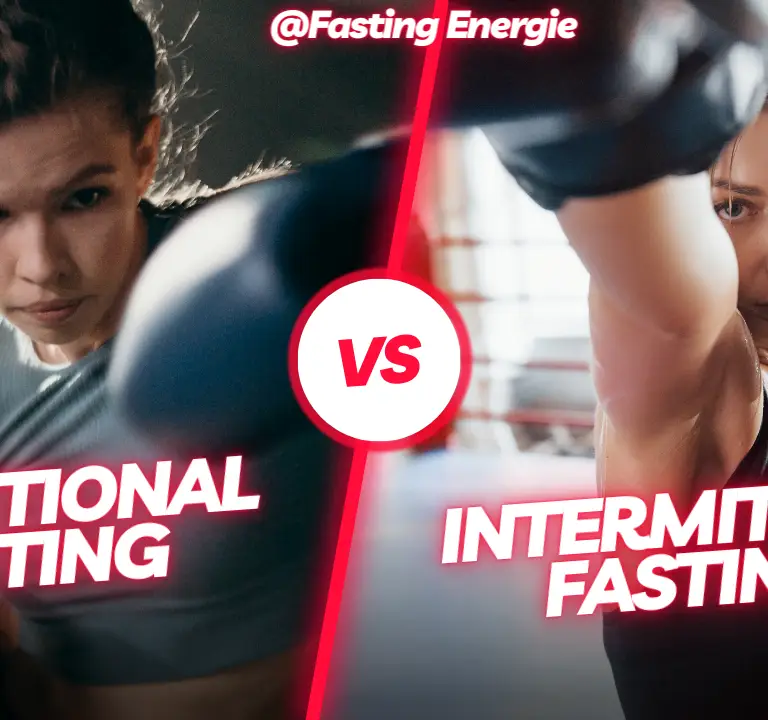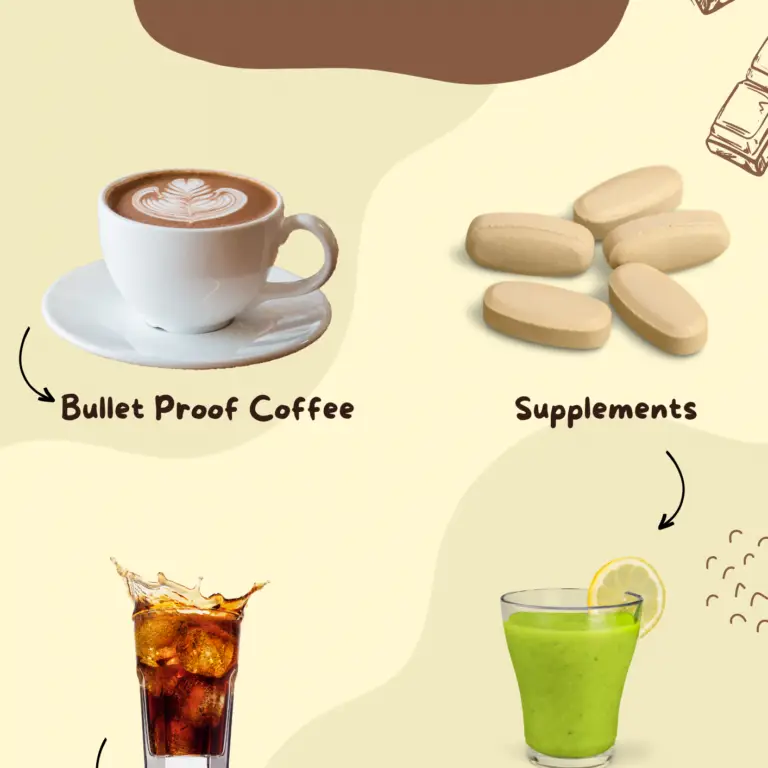Intermittent Fasting for Busy Professionals: How to Make It Work?
Table of Contents

Introduction
The Challenge of Maintaining a Healthy Diet for Busy Professionals
Because of their hectic schedules, busy professionals frequently struggle to maintain a balanced diet. Long hours, many meetings, work travel, and high-stress environments can all contribute to missed meals, dependency on fast food, and irregular eating habits. These habits not only lead to weight gain, but they also reduce productivity and overall well-being. The problem is not just finding time to eat, but also selecting nutritional foods that promote prolonged energy and health.
Benefits of Intermittent Fasting for Professionals
Enhanced Mental Clarity and Focus
Intermittent fasting has been demonstrated to improve cognitive performance, which is essential for professionals who must remain cognitively alert and make key decisions. Fasting boosts the production of BDNF, a protein that promotes brain health. Furthermore, it decreases inflammation, which can impair cognitive performance. Many practitioners report greater attention and mental clarity during fasting, which can be related to the body saving energy on digestion and increasing the availability of ketones, a more effective fuel source for the brain.
Improved Metabolic Health and Energy Levels
Intermittent fasting can provide numerous metabolic benefits, which are especially beneficial for busy professionals. By alternately eating and fasting, the body learns to better regulate blood sugar levels, boosting insulin sensitivity and lowering the risk of type 2 diabetes. Furthermore, intermittent fasting can improve lipid profiles by lowering triglycerides and increasing cholesterol levels. These improvements help to boost overall energy levels, avoiding the mid-afternoon slump that many people suffer as a result of excessive eating.
Time Management and Simplified Meal Planning
One of the practical benefits of intermittent fasting is that it simplifies meal planning and time management. Fasting can save you time by lowering the number of meals you have to plan, prepare, and eat. This is especially advantageous for professionals who have a full schedule of meetings and tasks. Additionally, intermittent fasting can lessen the need to worry about food throughout the day, simplifying decisions about what and when to eat and freeing up more time to focus on work and professional development.
Planning Your Fasting Schedule
Assessing Your Daily Schedule to Choose the Best Fasting Window
To successfully incorporate intermittent fasting into a hectic professional life, begin by reviewing your daily work and personal schedules. Determine when you are busy and when you can afford to fast without compromising your effectiveness. Professionals frequently fast during the following periods:
- 16/8 Method: Fast for 16 hours, including sleep, then eat within an 8-hour window, such as 12 to 8 p.m. This strategy is popular because it readily fits into an average weekday.
- 14/10 Method: A less intense method in which you fast for 14 hours and eat for over 10 hours, ideal for individuals who require a more gradual start.
Tips for Syncing Fasting Periods with Work Demands
- Avoid High-Demand Periods: Plan fasting times during less intense work periods to avoid high demand. If mornings are hectic, consider starting your eating window earlier in the day.
- Leverage Technology: Use applications to track your fasting periods and remind you when to start and stop eating, allowing you to maintain consistency despite a hectic schedule.
Integrating Intermittent Fasting into a Hectic Routine
- Begin Gradually: If you’re new to intermittent fasting, start with shorter times and gradually increase as you become used to the schedule.
- Remain Flexible: Adjust your fasting schedule to accommodate your work responsibilities. If an important breakfast meeting comes up, adjust your meal schedule accordingly.
How to Begin Intermittent Fasting as A Busy Professional
Managing Energy Levels During Work Hours
- Stay Hydrated: Drinking enough water will help regulate hunger and energy levels.
- Include Light Physical Activity: A quick stroll or some light stretching during the day can improve energy and focus, especially during fasting periods.
Nutritional Strategies for Eating Windows
- Plan nutrient-dense meals with low calories to maximise health advantages.
- Plan in Advance: Preparing meals on weekends or when you have free time ensures that you have nutritious options on hand during busy days.
Nutritional Strategies During Eating Windows
Optimising Nutrient Intake for prolonged Energy
- Focus on Balanced Macros: Each meal should contain a decent balance of proteins, lipids, and complex carbs to offer prolonged energy. Examples include chicken breast with quinoa and veggies, as well as fish with sweet potatoes and greens.
- Include Slow-Digesting Foods: Foods such as muesli, lentils, and whole grains deliver energy slowly, allowing blood sugar levels to remain constant.
Quick and Healthy Meal Ideas for Busy Professionals
- Breakfast: Overnight muesli with berries and nuts; Greek yoghurt with muesli and honey.
- Lunch: Quinoa salad with mixed vegetables and grilled chicken; wrap with hummus, turkey, and an abundance of fresh vegetables.
- Dinner: Stir-fried tofu with vegetables and brown rice, or baked salmon with steamed broccoli and sweet potatoes.
Overcoming Common Challenges
Dealing with Hunger and Energy Slumps
- Stay Hydrated: Feeling hungry can indicate dehydration. Drinking water or herbal teas can help reduce hunger.
- Include Nutrient-Dense Snacks: During your eating window, choose snacks strong in protein and healthy fats, such as almonds, seeds, or Greek yoghurt, to keep your energy levels stable.
- Plan Strategic Caffeine Use: Taking a small amount of caffeine throughout your fasting period will assist enhance energy. However, avoid consuming caffeine too close to bedtime.
Balancing Social and Professional Engagements with Fasting
- Communicate Your Needs: To manage expectations at social or professional engagements while fasting, it’s important to communicate your fasting schedule to coworkers and friends.
- Be Flexible: It is acceptable to change your fasting window on occasion to suit special events, as this can help you keep your schedule in the long run.
Leveraging Technology and Resources
Apps and Tools to Track Fasting and Eating Windows
- Fasting Apps: Use apps like Zero, Fastic, or Life Fasting Tracker to measure fasting hours, progress, and motivation.
- Reminder Tools: Set reminders on your phone or use smartwatch capabilities to notify you when your fasting period begins and finishes.
Resources for Meal Planning and Preparation
- Meal Planning Apps: Mealime and Eat This Much offer customisable meal plans based on your dietary preferences and eating schedule.
- Online Recipes and Blogs: Use resources that provide recipes for quick, healthful meals that align with your dietary goals.
Maintaining Long-Term Success
Strategies for Sustaining Intermittent Fasting Over Time
- Regularly Review and Adjust Your Goals: As your lifestyle and body change, so too should your fasting schedule and goals. Periodic reviews will help keep your regimen effective and aligned with your needs.
- Stay Informed: Keep up-to-date with the latest research and advice on intermittent fasting to continually refine your approach.
How to Adapt Your Fasting Strategy as Your Career Progresses
- Increase Flexibility: Maintaining rigid fasting windows may become challenging as job needs change. Be prepared to modify your fasting schedule to accommodate new job responsibilities or work hours.
- Incorporate Mindful Eating: Regardless of how hectic your schedule becomes, focussing on mindfulness while you eat will help you retain the benefits of fasting.
Conclusion
Intermittent fasting for busy professionals necessitates a systematic strategy that takes into account individual schedules, dietary requirements, and lifestyle adaptability. Professionals can incorporate and sustain intermittent fasting as a valuable aspect of their lives by efficiently handling typical problems, harnessing existing technology and resources, and being adaptable in fasting practices. This adaptability promotes not only long-term health and fitness, but also increases personal and professional productivity.
Frequently Asked Question
How do I do intermittent fasting with a busy schedule?
Choose a fasting plan that fits seamlessly into your routine. Many find the 16/8 method (fasting for 16 hours and eating during an 8-hour window) adaptable, as it can be adjusted to begin after dinner and end with a late breakfast or early lunch.
Is it okay to do intermittent fasting while working?
Yes, intermittent fasting can be done while working. It often requires less time for meal prep and can lead to higher productivity levels due to fewer interruptions for snacks or meals.
How do you do intermittent fasting while working a 9 to 5 job?
A popular approach is to skip breakfast, consume a healthy lunch around noon, and have dinner before 8 PM. This schedule fits well within a typical workday, aligning the eating window with standard lunch and dinner times.
How intermittent fasting could help boost your work performance?
Intermittent fasting may enhance focus and cognitive function by reducing insulin spikes and stabilizing blood sugar levels throughout the day. Many report higher energy levels and improved concentration, especially during fasting periods.
How to intermittent fast when working shifts?
Adjust your eating window to align with your shift. For example, if you work night shifts, you might eat your first meal at the start of your shift and finish eating a few hours before you sleep in the morning.
What is the Best Intermittent Fasting Schedule for Night Shift Workers?
Night shift workers might find a reverse fasting schedule effective, where they eat during the night and fast during the day. For instance, eating from midnight to 8 AM and fasting from 8 AM to midnight can synchronize fasting with sleeping and less active hours, aligning with their unique work schedules.







